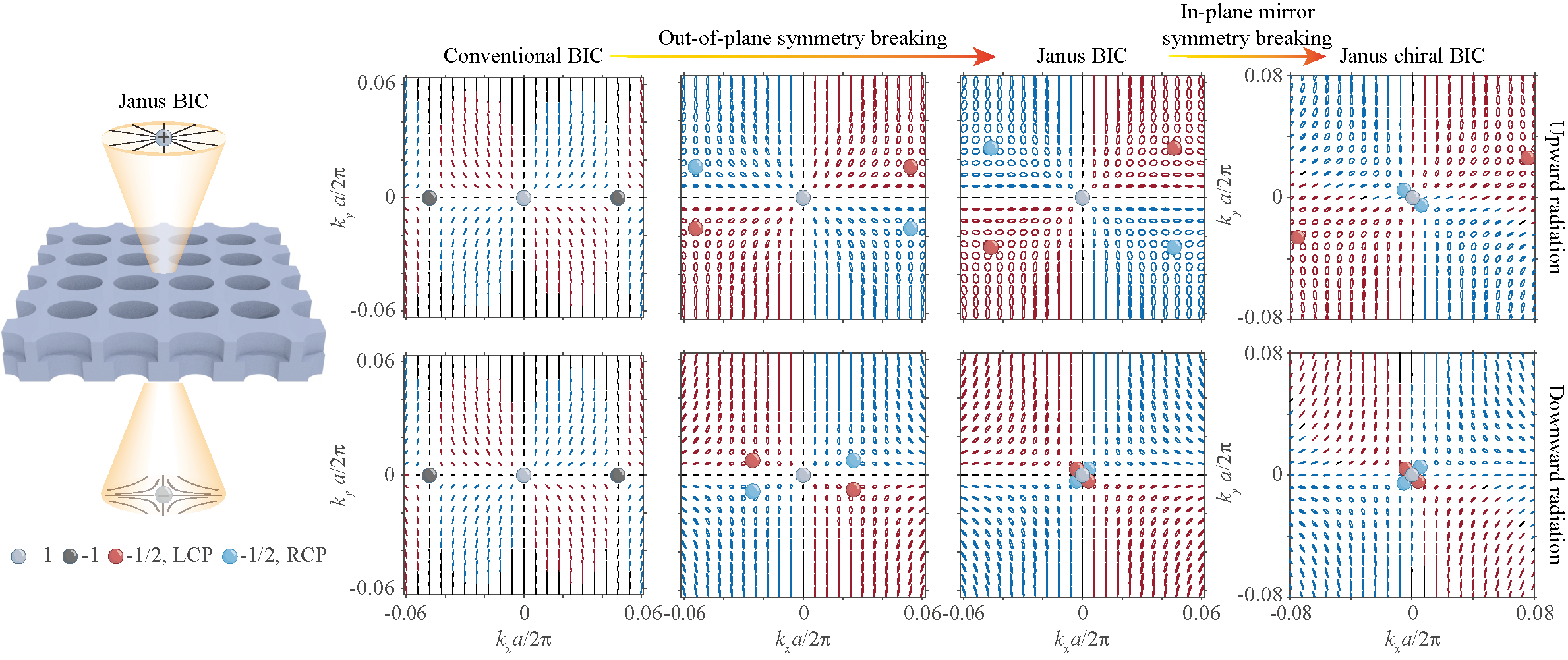Janus Bound States in the Continuum with Asymmetric Topological Charges
Researchers from the Hong Kong University of Science and Technology and Wuhan University have unveiled a new class of photonic states that offer unprecedented control over light confinement and polarization. Dubbed Janus Bound States in the Continuum (BICs) after the two-faced Roman deity, these novel states exhibit asymmetric topological charges—distinct “vortex” characteristics for light radiating upward versus downward—while retaining an infinite quality (Q) factor.
BICs are counterintuitive resonances that, despite lying within the spectrum of free-space radiation, do not leak energy. They act like perfect light traps, enabling sharp optical resonances, enhanced lasing, and ultrasensitive sensors. Traditional BICs, however, carry identical topological charges on both sides of a slab, limiting how one can manipulate the directionality or chirality of emitted light.
Researchers break this symmetry by engineering a bilayer photonic crystal slab whose upper and lower layers differ slightly in hole geometry. This out‐of‐plane mirror symmetry breaking splits accidental off‐Γ point BICs into pairs of circularly polarized states, then selectively merges four of these states back at the Γ point—but only for one side. The result: a Janus BIC with topological charge +1 upward and –1 downward, all while preserving the infinite Q factor that makes BICs so powerful.
Taking the symmetry-breaking further, by rotating the elliptical holes, the team achieves Janus chiral BICs. Here, only one handedness of circular polarization converges at the Γ point in each direction, imbuing the state with large intrinsic chirality (near-perfect circular dichroism) alongside its infinite Q. Such states could enhance chiral emission, sensing, and enantiomer separation.
By controlling Pancharatnam–Berry phase singularities in momentum space, Janus BICs offer a compact route to generate vortex beams, key for advanced optical communications and quantum information processing. Moreover, their asymmetric polarization vortices pave the way for nonreciprocal photonic devices that could route or isolate signals.
By unlocking asymmetric light behavior, Janus BICs represent a major advance in topological photonics—and open new paths for photonic devices that exploit direction- and spin-dependent light–matter interactions.

Figure 1: Schematic illustration of the concept and realization of Janus Bound States in the Continuum (Janus BICs). When the out-of-plane mirror symmetry is broken, two off-Γ point BICs split into four circularly polarized states (C-points), while the BIC at the Γ point is preserved. By selectively merging the four C-points in the downward radiation channel with the at-Γ BIC, a Janus BIC is realized. Further breaking the in-plane mirror symmetry causes two C-points with the same chirality and identical topological charge to merge into the Janus BIC, thereby achieving a chiral Janus BIC.
Link: https://doi.org/10.1103/PhysRevLett.134.013805





